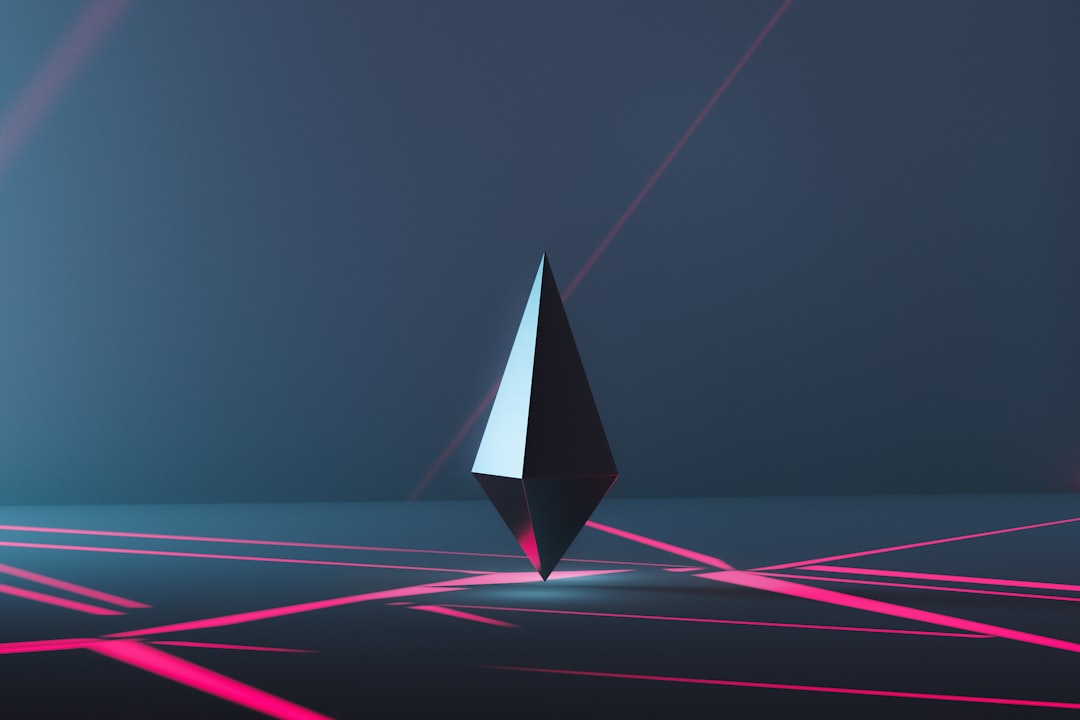Welcome to the exciting world of NFTs! In recent years, we’ve seen a surge in interest in this innovative form of digital asset ownership. From celebrities selling their own NFTs to artists earning millions through their works, NFTs have taken the art world and beyond by storm. But what exactly are NFTs, and how do they work? In this blog post, we’ll explore the ins and outs of NFTs, including their growing popularity, different types, and potential drawbacks. Whether you’re a long-time NFT enthusiast or just starting to learn about them, we hope this post will provide you with valuable insights and inspiration. So, let’s dive in!
What are NFTs?
NFTs, or non-fungible tokens, are digital assets that represent ownership of unique items or pieces of content. Unlike traditional cryptocurrencies like Bitcoin or Ethereum, which are interchangeable and have the same value, NFTs are one-of-a-kind and have distinct value based on their rarity and desirability.
Think of NFTs as digital collectibles that can be bought, sold, and traded just like physical collectibles such as trading cards or artwork. However, unlike physical collectibles, NFTs are stored on a blockchain, which is a decentralized and transparent ledger that records every transaction and ensures authenticity and ownership.
NFTs can represent a wide range of digital content, including digital art, music, videos, virtual real estate, and even tweets. Essentially, anything that can be digitized and has unique value can be made into an NFT.
The rise of NFTs has opened up new opportunities for creators, artists, and collectors to monetize and showcase their work. It offers a new way to own and value digital content and enables a direct relationship between creators and their audience. NFTs also offer a traceable and tamper-proof way to prove authenticity and ownership of a particular piece of content, making it a valuable tool in the fight against piracy.
Overall, NFTs represent a new frontier in the world of digital ownership and present exciting possibilities for creators and collectors alike. As the technology evolves and becomes more widely adopted, it will be fascinating to see what new forms of digital content and value will be created.
Think of NFTs as digital collectibles that can be bought, sold, and traded just like physical collectibles such as trading cards or artwork.
How do NFTs work?
NFTs, or Non-Fungible Tokens, are a type of digital asset that uses blockchain technology to verify their ownership and authenticity. Unlike other cryptocurrencies that are fungible, meaning they can be exchanged for equal value, NFTs are unique and cannot be replicated or replaced. Each NFT is one-of-a-kind and has a specific value attached to it.
When someone creates an NFT, they assign a specific value to it and upload it onto a blockchain. This means that the NFT is now verified and the ownership can be easily tracked. Once an NFT is uploaded, it can be bought and sold just like any other asset. The value of an NFT is determined by the market demand for it, and can vary widely depending on the popularity of the artwork or the reputation of the creator.
One of the key components of NFTs is the smart contract, which is a self-executing contract that is coded into the blockchain. This means that once a smart contract is in place, it can automatically execute a specific set of instructions without the need for human intervention. This is particularly important when it comes to NFTs, as it ensures that the ownership and transfer of the asset is completely transparent and secure.
To buy an NFT, a buyer must typically use a cryptocurrency wallet, such as Ethereum, which is the most popular blockchain for NFTs. Once the buyer has the necessary cryptocurrency, they can browse various NFT marketplaces and purchase the NFT that they desire. The ownership of the NFT is then transferred to the buyer and the transaction is recorded on the blockchain, making it an open and transparent process.
In short, NFTs work by using blockchain technology to verify the ownership and authenticity of digital assets. Each NFT is unique and has a specific value attached to it, which can be bought and sold just like any other asset. The use of smart contracts ensures that the ownership and transfer of NFTs is completely transparent and secure, making them an exciting innovation in the world of digital art and collectibles.
Each NFT is unique and has a specific value attached to it, which can be bought and sold just like any other asset.
Why are NFTs gaining popularity?
NFTs have been around since 2017, but it’s only recently that they have gained widespread popularity. There are several reasons for this phenomenon, which we will explore in this section.
Firstly, NFTs have become a new way for artists, musicians, athletes, and other creators to monetize their work. With the rise of social media and streaming platforms, many artists struggle to make a living from their art. NFTs provide them with a new revenue stream that allows them to sell their digital creations directly to their fans, without relying on middlemen like galleries or record labels.
Another reason for the popularity of NFTs is their uniqueness. Unlike traditional digital files, NFTs are one-of-a-kind, with each one having a unique digital signature that verifies its authenticity. This gives them a certain cachet and exclusivity that appeals to collectors and fans alike.
Moreover, the blockchain technology that underpins NFTs provides a level of transparency and security that is missing from traditional art and collectibles markets. NFT transactions are recorded on a public ledger, which makes it easy to verify ownership and provenance. This has led to a surge in interest from institutional investors, who see NFTs as a high-growth asset class.
Finally, NFTs are still a relatively new and untested market, which makes them exciting and unpredictable. As with any new technology, there is a sense of excitement and possibility around NFTs, with many people eager to see where this market will go and what new innovations will emerge.
NFTs are gaining popularity for a variety of reasons, including their potential as a revenue stream for creators, their uniqueness and exclusivity, the transparency and security provided by blockchain technology, and the sense of excitement and possibility that surrounds this new and untested market. Whether you are an artist, a collector, or simply someone fascinated by the possibilities of new technology, NFTs are definitely worth keeping an eye on.
Unlike traditional digital files, NFTs are one-of-a-kind, with each one having a unique digital signature that verifies its authenticity.
Different types of NFTs
NFTs come in many different forms and can represent a variety of things. Most commonly, they are used to represent digital artwork, music, and other creative works. However, NFTs can also represent physical assets such as real estate or even a car.
One popular type of NFT is the “one-of-a-kind” NFT, which represents a unique piece of artwork or other creative work that is only available as a single copy. These types of NFTs are often highly valued by collectors and can sell for millions of dollars at auction.
Another type of NFT is the “limited edition” NFT, which represents a limited run of a particular artwork or creative work. These NFTs are often released in limited quantities, and once they are sold out, they are no longer available for purchase.
NFTs can also be used to represent memberships or access to exclusive content or events. For example, a band might release an NFT that grants the owner access to a private concert or backstage meet-and-greet.
Finally, NFTs can also be used to represent ownership of physical assets. For example, a company might release an NFT that represents ownership of a particular piece of real estate or a rare vintage car.
Overall, the possibilities for NFTs are vast and varied. As more and more people discover the potential of this technology, we can expect to see even more creative uses for NFTs in the future.
Most commonly, they are used to represent digital artwork, music, and other creative works.
Potential drawbacks and criticisms of NFTs
While NFTs have been hailed as a revolutionary technology, they are not immune to criticism. The following are some of the potential drawbacks and criticisms of NFTs:
Environmental concerns
One of the main criticisms of NFTs is their potential impact on the environment. The process of mining cryptocurrencies and creating NFTs requires a significant amount of energy. According to a report by the Cambridge Center for Alternative Finance, the energy consumption of the Bitcoin network alone is equivalent to the entire energy consumption of Switzerland.
The environmental impact of NFTs is a valid concern, and it is important for creators and platforms to explore ways to reduce their carbon footprint. Some solutions include switching to more efficient mining hardware, using renewable energy sources, and offsetting carbon emissions.
Lack of regulation
Another potential drawback of NFTs is the lack of regulation. While blockchain technology offers a high level of security and transparency, it also allows for anonymity and lack of oversight. This means that there is a risk of fraudulent activities, such as fake NFT sales, and a lack of protection for buyers and sellers.
As the NFT market continues to grow, it is important for regulators to establish clear guidelines and standards to ensure the integrity and safety of the market.
Exclusivity and elitism
Some critics argue that the exclusivity and elitism of NFTs goes against the principles of open-source and decentralized technology. The high prices and limited availability of certain NFTs can create a sense of exclusivity and elitism, which can be off-putting to some people.
However, it is important to note that NFTs are not inherently exclusive. There are many affordable and accessible NFTs available, and the technology has the potential to democratize the art market and provide new opportunities for artists.
Ownership and copyright issues
One of the unique features of NFTs is their ability to represent ownership rights of digital assets. However, this also raises questions about copyright and intellectual property. Some critics argue that NFTs could be used to circumvent copyright laws and enable the unauthorized distribution of copyrighted works.
It is important for creators and platforms to establish clear ownership and copyright policies to ensure that NFTs are used ethically and responsibly.
Conclusion
While NFTs are not without their potential drawbacks and criticisms, they have the potential to revolutionize the art and collectibles market, as well as provide new opportunities for artists and creators. As with any new technology, it is important to approach NFTs with an open mind and a critical eye, and to work towards addressing any potential issues and challenges that arise.
Some critics argue that NFTs could be used to circumvent copyright laws and enable the unauthorized distribution of copyrighted works.
Conclusion and Future Outlook on NFTs
As we come to the end of this blog post, it’s clear that NFTs are rapidly gaining popularity and changing the way we think about digital ownership. While their potential benefits and drawbacks have been hotly debated, there’s no denying the fact that NFTs have already made a significant impact on the art and music industries, and their influence is likely to spread to other areas in the near future.
One potential area where NFTs could have a significant impact is gaming. As the technology behind NFTs continues to improve, it’s likely that we’ll see more and more games that incorporate them in interesting and innovative ways. For example, imagine a game where each player’s avatar is a unique NFT that can be traded and sold on a marketplace, or a game where rare NFT items can be collected and traded between players.
However, as with any new technology, there are also potential risks and challenges associated with NFTs. One concern is the environmental impact of the energy-intensive blockchain technology that powers many NFT platforms. As more and more people jump on the NFT bandwagon, it’s important to ensure that these platforms are using sustainable energy sources and minimizing their carbon footprint.
Despite these potential challenges, there’s no denying that NFTs are an exciting and rapidly evolving technology with enormous potential. Whether you’re an artist looking for new ways to monetize your work, a collector looking for unique and valuable digital assets, or simply someone curious about the cutting edge of technology and culture, NFTs are sure to be an area worth keeping an eye on in the coming years.





